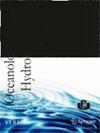用人工神经网络(一种新的统计方法)估算浮游动物密度的方法,Elazığ-Türkiye
IF 1
4区 环境科学与生态学
Q4 OCEANOGRAPHY
引用次数: 0
摘要
摘要 本研究利用人工神经网络,通过一些水质参数来预测西普水库(埃拉泽格)的浮游动物密度。在 2021-2022 年期间,使用标准浮游生物网每月从 Cip 水库的三个站点采集浮游生物样本。测量了水温、溶解氧、pH 值、电导率、secchi disk、碱度、总氮和总磷。浮游动物密度的实际值与人工神经网络得出的结果进行了比较。计算了实际值和人工神经网络值的平均绝对百分误差 (MAPE)。结果表明,人工神经网络值与实际数据接近。第一站的平均绝对误差百分比值为:轮虫 1.143,桡足类 0.118,栉水母 0.141。第二站的 MAPE 百分比值为:轮虫 0.941,鳞介动物 0.377,桡足类 0.185。第三站的轮虫 MAPE 百分比值为 0.342,鳞介动物为 0.557,桡足类为 0.301。本研究表明,具有学习功能的人工神经网络能够成功预测水生环境中浮游动物的密度。研究结果表明,人工神经网络是了解浮游动物与环境关系的有力工具。本文章由计算机程序翻译,如有差异,请以英文原文为准。
Estimation of zooplankton density with artificial neural networks (a new statistical approach) method, Elazığ-Türkiye
Abstract This study was carried out to predict the zooplankton density in the Cip reservoir (Elazığ) with an artificial neural network, using some water quality parameters. The plankton samples were collected monthly from Cip Reservoir in 2021- 2022, using a standard plankton net from three stations. Water temperature, dissolved oxygen, pH, electrical conductivity, secchi disk, alkalinity, total nitrogen and total phosphorus were measured. The actual values of zooplankton density and results obtained from the artificial neural networks were compared. Mean absolute percent error (MAPE) values were calculated with actual values and ANNs values. ANNs values were determined to be close to the real data. MAPE percentage value at the first station was determined as 1.143 for Rotifer, 0.118 for Cladocera, and 0.141 for Copepoda. The MAPE percentage value at the second station was determined as 0.941 for Rotifer, 0.377 for Cladocera, and 0.185 for Copepoda. The MAPE percentage value at the third station was determined as 0.342 for Rotifer, 0.557 for Cladocera, and 0.301 for Copepoda. In the present study, it has been seen that artificial neural networks with a learning feature are successful in predicting zooplankton densities in an aquatic environment. It can be concluded from the study that ANNs are a powerful tool for understanding their relationships with the environment
求助全文
通过发布文献求助,成功后即可免费获取论文全文。
去求助
来源期刊
CiteScore
1.70
自引率
11.10%
发文量
8
审稿时长
>12 weeks
期刊介绍:
Oceanological and Hydrobiological Studies is an international journal published by the Institute of Oceanography, University of Gdańsk in Poland. The journal has 4 issues per year and contains papers on all aspects of the marine environment and hydrobiology. All manuscripts are reviewed by editors and independent experts. Based on the referees'' recommendations, the Editor will make a decision on whether to accept a contribution. All articles are published in English. The journal is open to all matters concerning the water environment, thus providing the readers with a wide spectrum of topics in every issue.

 求助内容:
求助内容: 应助结果提醒方式:
应助结果提醒方式:


